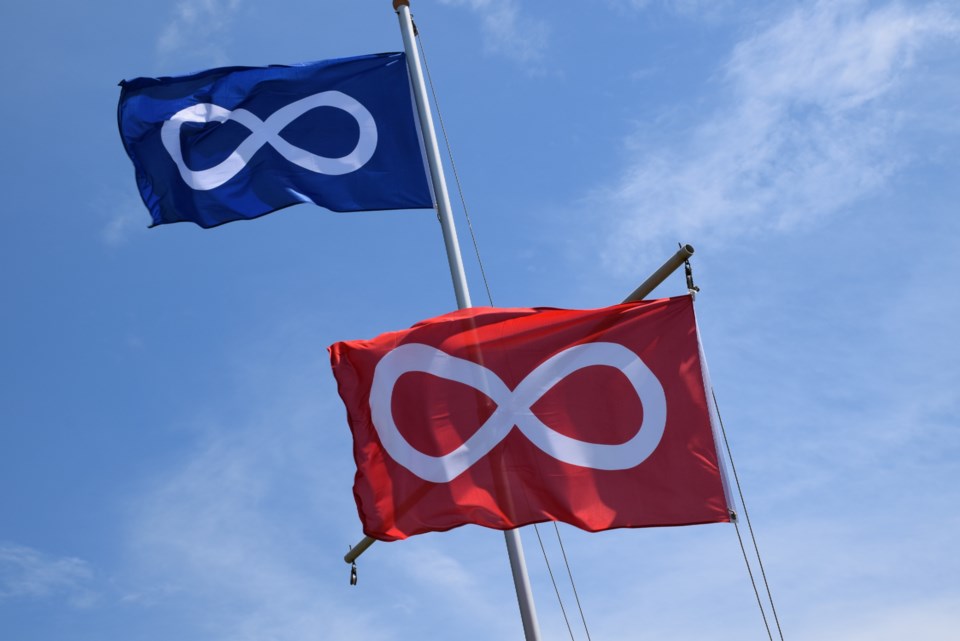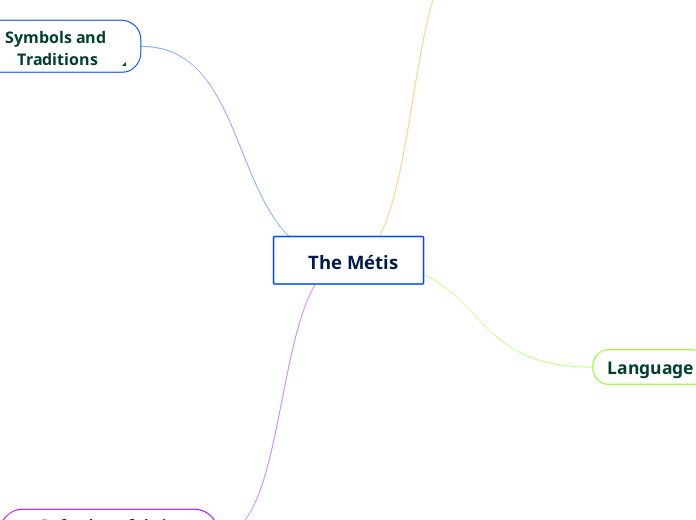The Métis
Who They Are
The Métis are a distinct Indigenous group, among Canada's founding peoples.
The Métis Nation is comprised of mixed ancestry, as they were born from relations between First Nations women and European men.
Language
The Métis developed a language that was a combination of distinct languages. This resulted in the creation of their new specific language called Michif.
During the colonization process, the Michif language declined, but the language is now being preserved and taught to Métis youth and a new generation of speakers.
Symbols and Traditions^

The Métis Flag contains an infinity symbol which represents both the immortality of the nation and the joining of two cultures.
The Métis people developed a unique dance known as 'The Red River Jig,' which combines footwork from Native dancing, mixed with the form and instruments of European music. Jigging requires a lot of energy as it traditionally begins early in the evening and lasts until dawn.
The Métis sash is one of the most prominent symbols of the Métis Nation. The bright coloured, woven sash is made by the finger-weaving technique and now symbolizes pride and identification for Métis people.
Fiddle Music has been a part of Métis lifestyle for hundreds of years. The fiddle is the primary instrument used for the Métis jig, including the famous 'Red River jig.' The fiddle is still a prominent instrument used in celebrations today.
Defenders of their rights, land and culture
During the War of 1812, the Métis supported and fought for Canada to become an independent land.
Louis Riel was a defender of Métis rights and he encouraged the Métis to stand up against the Canadian Government and fight for their land and way of life. Louis Riel Day, which is held every year on November 16, is a way to celebrate Métis culture and the progress being made to preserve their way of life.
The Métis Nation of Ontario (MNO) was established (a Métis specific governance structure), to work towards preserving the culture and heritage, improving the way of life for Métis families and proudly asserting their existence and contributions.
